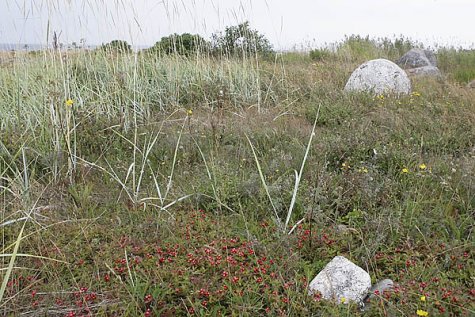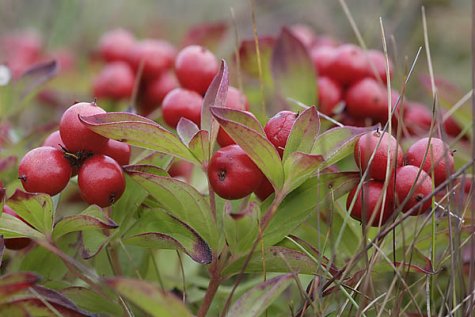Dwarf cornel – not easily overlooked
Photos: Arne Ader
Translation: Liis
Dwarf cornel locality. Purekkari
Dwarf cornel Rootsi kukits Cornus suecica
The herbaceous stems of the dwarf cornel are angular and slightly hairy, and the rhizome of the semi-shrub is woody. It grows on the western islands and in North Estonian meadows and forests turning into bogs, sometimes on the seashore. Its presence on the verges of peat fields hints that the plant prefers an acidic, moist, preferably sunny or semi-shaded environment for growth.
The dwarf cornel is so eye-catching with its "Swedish red“ fruits that it is difficult to pass it by. At a first encounter unknown red and tempting berries cause a “danger - poisonberries“ feeling. But they are not – the berries simply have no taste, or seem insipid to some tasters. So they are so-called “inedible berries“, with pale brown seeds.
The oppositely-placed stalkless leaves are hairy on both sides, ovate (egg-shaped) and with a sharp tip. Already coloured red at the edges.
Many plants grow in Estonia on the northern limit of their range, but the Arctic dwarf cornel is at the southern limit of its range.
Dwarf cornel
Translator’s note: "Swedish red" or Falu red – traditional red paint used for exterior wood painting, main ingredient iron oxides










